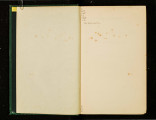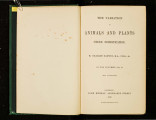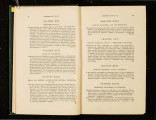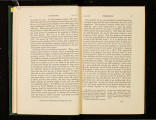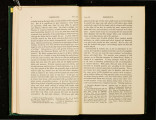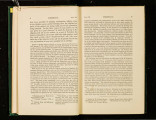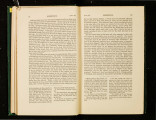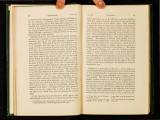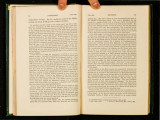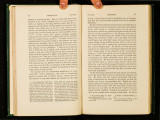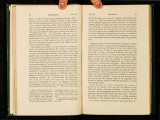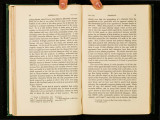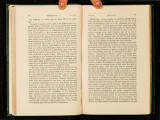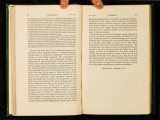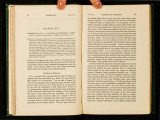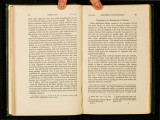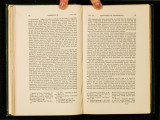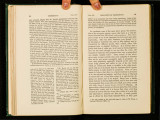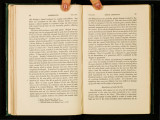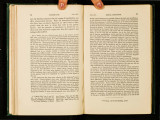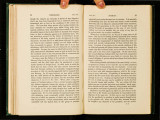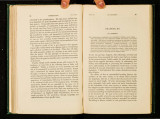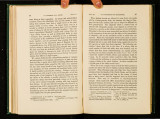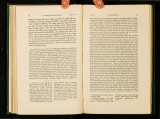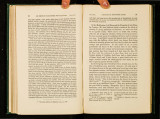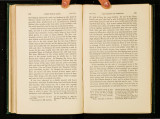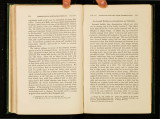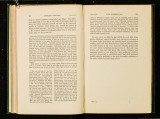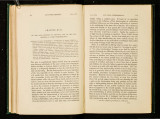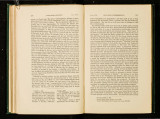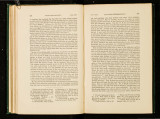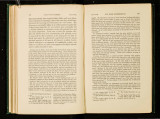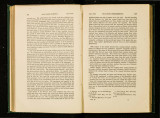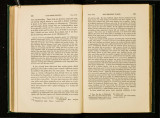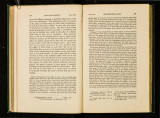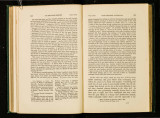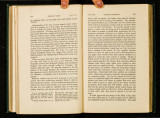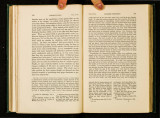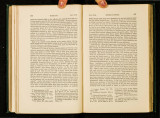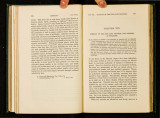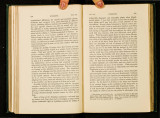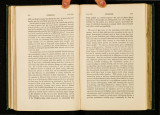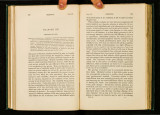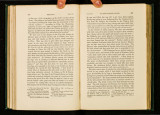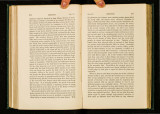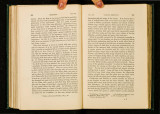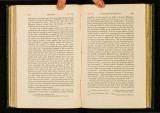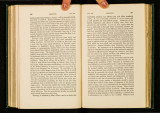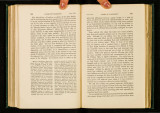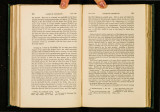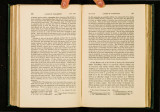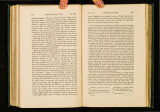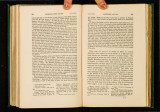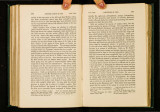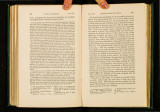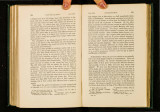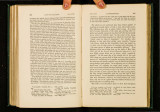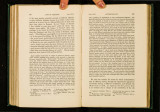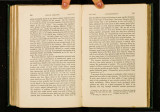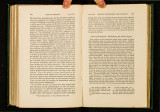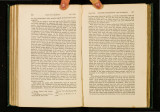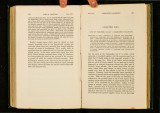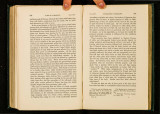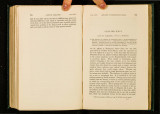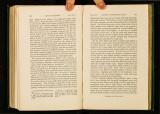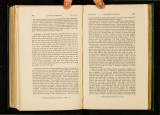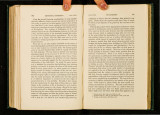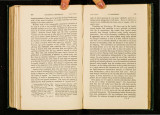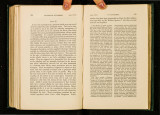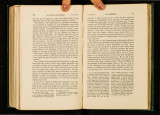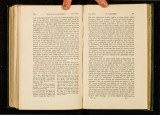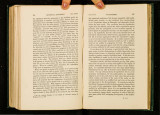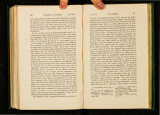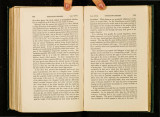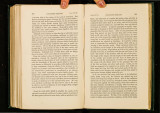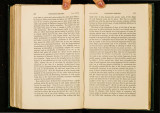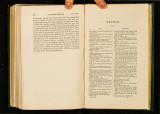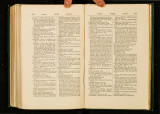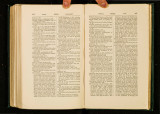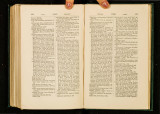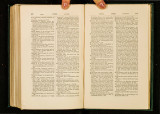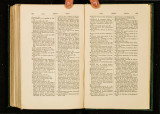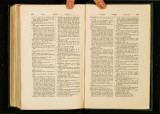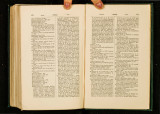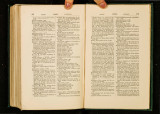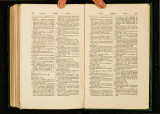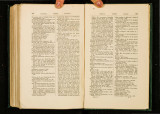| OCR Text |
Show 288 DEFINITE ACTION OF TilE CHAP. XXIll. tion had been definitely caused by some change in the conditions to which the plants had been exposed; yet, in other cases, such an admission is extremely difficult. As new characters sometimes appear by bud-variation, which do not occur in the parentspecies or in any allied species, we may reject, at least in these cases, the idea that they are clue to reversion. Now it is well worth whHe to reflect maturely on some striking case of budvariation, for instance that of the peach. This tree has been cultivated by the mmion in various parts of the world, has been treated differently, grown on its own roots and grafted on various stocks, planted as a standard, against a wall, and under glass; yet each bud of each sub-variety keeps true to its kind. But occasionally, at long intervals of time, a tree in England, or under the widely-different climate of Virginia, proctuces a single bud, and this yields a branch which ever afterwards bears nectarines. Nectarines differ, as every one knows, from peaches in their smoothness, size, and flavour; and the difference is so great, that some botanists have maintained that they are specifically distinct. So permanent are the characters thus suddenly acquired, that a nectarine produced by bud-variation has propagated itself by seed. To guard against the supposition that there is some fundamental distinction between bud and seminal variation, it is well to bear in mind that nectarines have likewise been produced from the stone of the peach ; and, reversely, peaches from the stone of the nectarine. Now is it possible to conceive external conditions more closely alike than those to ·which the buds on the same tree are exposed ? Yet one bud alone, out of the many thousands borne by the same tree, has suddenly without any apparent cause produced a nectarine. But the case is even stronger than this, for the same flower-bud has yielded a fruit, one-half or one-quarter , a nectarine, and the other half or three-quarters a peach. Again, seven or eight varieties of the peach Lave yielded by bud-variation nectarines: the nectarines thus produced, no doubt, differ a little from each other; but still they are nectm·ines. Of course there must be some_.cause, internal or external, to excite the peachLud to change its nature ; but I cannot imagine a class of facts better adapted to force on our minds tl~e conviction that what we call the external conditions of life are~quite insignifica.nt in CIIAP. XXlli. CONDITIO~S OF LIFE. 289 relation to any particular variation, in comparisou with the organisation or constitution of the being which varies. It is known from the labours of Geoffroy St. Hilaire, and ~·ecently from those of Dareste anLl others, that eggs of the fowl, If s~aken, placed upright, perforated, covered in part with varnish, &c., produce monstrous chickens. Now these monstrosities may be said to be directly caused by such unnatural conditions, but the modifications thus induced are not of a definite nature. An excellent observer, M. Camille Dareste,"7 remarks "that the various species of monstrosities are not determined "by specific causes; the external agencies which modify the " dev_elopment of the embryo act solely in eausing a pertur" batwn-a perversion in the normal course of development." He compares the result to what we see in illness: a sudden chill, f~r instance, affects one indivillual alone out of many, causing mther a cold, or sore-throat, rheumatism, or inflammation of the lungs or pleura. Contagious matter acts in ari analogous ma.nner.08 vVe may take a still more specific instance : seven pigeons were struck by rattle-snakes; 59 some suffered from convulsions· some had their blood coagulated, in others it was perfectly fluid; some showed ecchymosed spots on the heart, others on the intestines &c. ; others again showed no visible lesion in any organ. It i~ w.ell known that excess in drinking causes different diseases in d1ffer~nt men; but men living unrler a cold and tropical climate ~re differently affected :60 and in this case we see the definite 1~fluence of opposite ?onditions. The ~oregoing facts apparently gtve_ us as ~ood an Idea as we are hkely for a. long time to obtam, ho_w 111 n:any cases external conditions act directly, though not defimtely, 111 causing modifications of structure. 8ummary.-Ther~ can be no doubt, from the facts given in the early part of th1s chapter, that extremely slight changes in 57 'Memoire sur la Production Artiiicielle des Monstrosites,' 1862, pp. 8-12; ' Recherches sur les Conditions, &c., chez les Monstres,' 1863, p. 6. An abstract is given of Geoffroy's Experiments by his son, in his 'Vie, Travaux, &c.,' 1847, p. 290. ss Paget, 'Lectures on Surgical VOL. II. Pathology,' 1853, vol. i. p. 483. 59 'Researches upon the Venom of th~ Rattle-snake,' Jan. 1861, by Dr. M1tchell, p. 67. 60 Mr. Sedgwick, in ' British and Foreign l\ieclico-Chirurg. Review, July 1863, p. 175. u |




